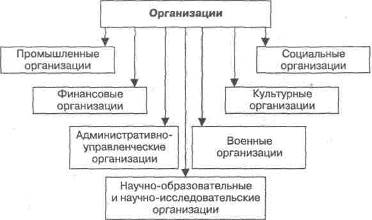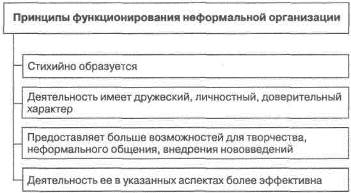Lecture
Scheme 9.1 . The concept of social organization
Scheme 9.2. Organization Models
The psychological approach. It is based on the study of the motivations of employees based on their psyche and on this basis - management decisions.
Sociological approach. It is based on the study of intra-collective relations, employee relations {nitap relations) and the external relations of the collective with society {public relations).
The classic or administrative model of an organization. The American engineer F. Taylor (1856-1915) in practice introduced a system of standardization of labor methods, which led him to the idea of production lines and conveyors. The main role in such an organization was played by the administration and managerial personnel, who supervised the production process. To stimulate ordinary workers, he offered material incentives for initiative and hard work.
The organization-machine model. Its author is a French engineer A. Fayol. He regarded the organization as an impersonal mechanism in which formal-rational relations and a hierarchical management system prevailed. The task of the administration is to control, coordinate and plan the work of various parts of the system. Fayol believed that the effectiveness of the organization is determined by the unity of command and a clear division of labor.
Interactionist model of organization. The American sociologist C. Barnard believed that living human personalities with individual characters, interests, motives cannot but affect the functions they perform. The interactionist model not only takes into account personal qualities (the human factor), but also the impossibility of isolating personnel from the processes taking place in society.

Scheme 9.3. Characteristics of a bureaucratic organization according to M. Weber
All organizations, due to the standardization of their activities and the unity of management, are more or less bureaucratic. "Bureaucracy" is a term coined by the French scholar de Gourne (1745), which means the power of officials. M. Weber recognized both the negative and positive role of the bureaucracy. He described the characteristics of a bureaucratic organization.
Characteristics of a bureaucratic organization according to M. Weber:
• a hierarchy of power in the form of a pyramid, in which each higher layer controls the lower layer and implements a chain of control from the top to the base;
• The activities of officials are subject to strict rules; the higher the post, the more rules a manager is bound to and the more flexibility his activity requires;
• the place and salary of each in the organization is strictly fixed and the advancement (career) of an official is based on his abilities and length of service in the organization;
• the private lives of officials are both spiritually and physically separate from activities in a bureaucratic organization; the latter is impersonal;
• officials, managing material resources, do not own them (even the offices and desks at which they sit); workers are separated from control of the means of production.

Scheme 9.4. Formation of organizations by E. Ross
M. Weber believed that organizations are formed from primary groups. The primary group rests on the authority (charisma) of the leader. There are no specific roles and relationships. It all depends on the attitude of the leader to a specific member, and it can quickly change. To consolidate his position, the leader and his entourage affirm the norms, rules, traditions of the group, the hierarchy of positions, statuses. M. Weber called this process the routinization of charisma. The American sociologist E. Ross (1980) detailed this process.
Formation of organizations by E. Ross:
• “crystallization”, which consists in understanding the needs of society and taking measures to meet them (for example, the creation of an enterprise, the recruitment of personnel);
• recognition. At this stage, leaders come into contact with other organizations to discuss, compare, align their goals and joint efforts; as a result receive public recognition;
• Institutionalization, which means that the organization’s activities are carried out legally, in a generally accepted way. The organization is registered by state bodies and performs a social function recognized by all.

Scheme 9.5. Features of a modern organization according to A. Prigogine
Features of a modern organization according to A. Prigogine:
• has a purposeful nature, as it is created for certain purposes and evaluated through the achievement of goals;
• in order to achieve the goal with maximum efficiency, people in the organization are distributed by status and role. The interests and needs of each member are satisfied to the extent established by the status-role structure;
• the organization is built on the basis of the division of labor and therefore has horizontal structures (equal-level units). But no less important for the functioning of the organization are vertical structures (hierarchy) that dominate horizontal ones;
• in any organization, management and controlled subsystems are clearly distinguished. Managers perform coordination functions of homogeneous (horizontal) structures. Hierarchy makes it possible to achieve a single goal;
• the management subsystem creates its own specific means of regulation and control: institutional (internal) norms, that is, norms of special institutions with special powers and sanctions (punishments and incentives).
Any organization has a so-called cooperative, or organizational, effect. It consists of:
• simultaneous efforts of many people and means;
• specialization of each department, department, employee;
• synchronization, that is, bringing different actions and processes to activities with an unchanged time interval, in one phase.
Thus, a social organization is a holistic system, the efficiency of which is higher than the total efficiency of all members (departments).

Scheme 9.6. Classification of organizations by role and place in the system of public relations
Industrial organizations are those that produce products. These are factories, factories, farms, cooperatives, joint-stock companies, artels.
Financial organizations - provide relations between industrial and other enterprises with the help of financial resources. These include banks, insurance companies, funds.
Administrative and administrative organizations - bodies of state power, local self-government, tax, control, supervisory, etc.
Scientific and educational and research organizations are universities, research institutes, research centers.
Military organizations are those that perform specific functions of defense and defense of the country.
Cultural organizations - perform cultural and educational tasks. These include: theaters, philharmonic societies, museums, cinema, television.
Social organizations are healthcare, social security institutions.
Classification and functioning of organizations. All the variety of social organizations can be classified on various grounds.

Scheme 9.7. Principles of functioning of a formal organization

Scheme 9.8. Principles of functioning of an informal organization
A formal organization is an association of people to fulfill a specific goal, having a certain social structure (hierarchy of positions, positions), normative regulation of behavior, separation of functions (responsibilities), management and coordination system, and special communication channels.
Informal organizations are spontaneously formed systems of social ties based on the personal qualities of people.
The main features of informal organizations are:
• lack of a clear hierarchy and structure;
• informal relationships (no instructions, flexible functions);
• the basis of relations is not strict standards, but universal norms.
You can formulate general rules for combining formal and informal organization in the activities of any institution. Obviously, small organizations are easier to centralize and strictly determine the functions of each member, but they need it less than large ones, which are much more centralized.
Centralization and rigidity of ties (formal organization) are necessary and easier to take root where labor is mechanical and unchanging (work operations are differentiated and indicators of labor outcomes are strictly defined), where competence and professionalism are of a low level. Where it is difficult to introduce objective indicators (especially the results of work), where the nature of work is volatile and the qualifications are high, the informal organization is better manifested.
Comments
To leave a comment
Sociology
Terms: Sociology